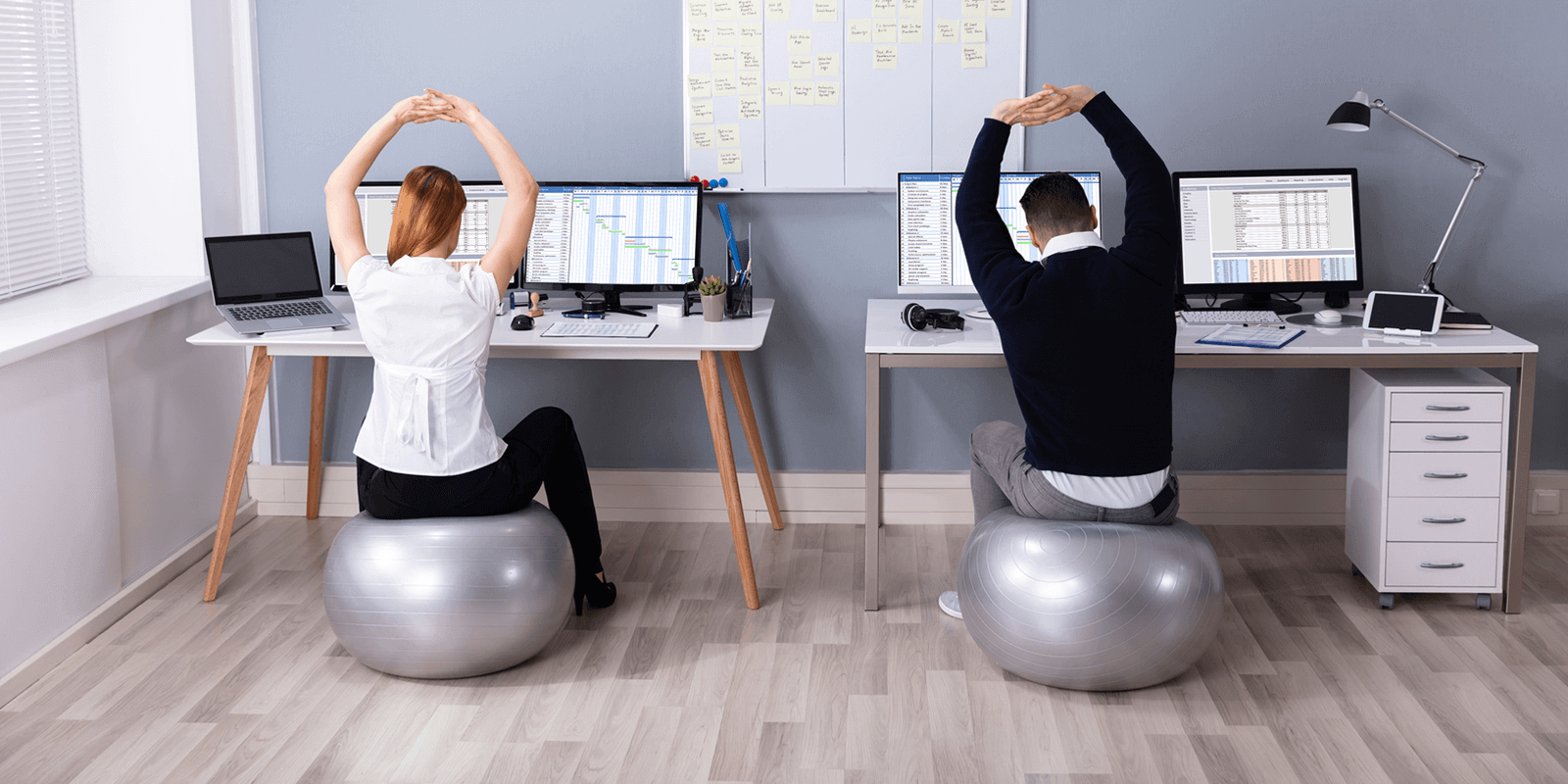Posture Improvement
“Enhancing Workplace Ergonomics: A Comprehensive Guide to Improve Posture and Well-being”
In the contemporary work landscape, the prevalence of musculoskeletal disorders among office workers is on the rise, primarily attributed to prolonged sitting and repetitive movements. With the average Australian office worker spending up to 40 hours a week sitting, prioritizing ergonomics becomes paramount for mitigating long-term health issues. In this article, we delve into five impactful strategies to enhance workplace ergonomics and foster a healthier, more productive work environment.
The Importance of Posture:
Subheading: “Attitude is Key to Long-Term Well-being”
Recognizing Warning Signs: Discomfort or pain signals potential issues; correcting posture is essential.
Eye-Level Work: Elevate monitors to eye level, reducing strain on the neck from looking up or down.
Centered Workstation: Positioning the primary monitor directly in front minimizes strain from side-to-side movements. BUILD A BETTER TOMORROW
Arm and Shoulder Support: Ensure elevated chair height for comfortable arm and wrist positioning.
Upright Sitting: Cultivate a habit of sitting comfortably and upright, avoiding slouching or lying down. Posture Improvement
Footrest Benefits: Alleviate thigh pressure by using a footrest for slight leg elevation.
Staying Active at Work:
“Incorporating Movement for Health and Productivity” Posture Improvement
Health Benefits of Movement: Regular breaks and activities enhance overall well-being and boost productivity.
Break Every 25-30 Minutes: Encourage short breaks, promoting physical and mental rejuvenation.
Utilizing Breaks: Simple activities like making tea or taking a short walk can refresh muscles and mind. BUILD A BETTER TOMORROW
Conducting Employee Ergonomic Assessments:
“Proactive Measures for Workplace Health”

Monitoring Health Trends: Increased sick days necessitate a proactive approach to identify and address health issues.
Ergonomic Assessments: Regular evaluations to ensure workstations are conducive to employee health.
Customized Solutions: Tailoring ergonomic solutions based on individual needs enhances effectiveness. Posture Improvement
In conclusion, prioritizing workplace ergonomics is not just a matter of comfort; it’s an investment in long-term employee health and productivity. By adopting these strategies, businesses can create a workspace that fosters good posture, encourages movement, and proactively addresses potential health issues. Taking these steps ensures a work environment that promotes not only physical well-being but also contributes to a more engaged and resilient workforce.
“Enhancing Workplace Ergonomics: A Comprehensive Guide to Improve Posture and Well-being”
In the contemporary work landscape, the prevalence of musculoskeletal disorders among office workers is on the rise, primarily attributed to prolonged sitting and repetitive movements. With the average Australian office worker spending up to 40 hours a week sitting, prioritizing ergonomics becomes paramount for mitigating long-term health issues. In this article, we delve into five impactful strategies to enhance workplace ergonomics and foster a healthier, more productive work environment.

The Importance of Posture:
Subheading: “Attitude is Key to Long-Term Well-being”
Recognizing Warning Signs: Discomfort or pain signals potential issues; correcting posture is essential.
Eye-Level Work: Elevate monitors to eye level, reducing strain on the neck from looking up or down.
Centered Workstation: Positioning the primary monitor directly in front minimizes strain from side-to-side movements. BUILD A BETTER TOMORROW
Arm and Shoulder Support: Ensure elevated chair height for comfortable arm and wrist positioning.
Upright Sitting: Cultivate a habit of sitting comfortably and upright, avoiding slouching or lying down.Posture Improvement
Footrest Benefits: Alleviate thigh pressure by using a footrest for slight leg elevation.
Ergonomic Furniture: Consider investing in chairs with lumbar support and adjustable features for a personalized setup.
Staying Active at Work:
“Incorporating Movement for Health and Productivity”
Health Benefits of Movement: Regular breaks and activities enhance overall well-being and boost productivity.
Break Every 25-30 Minutes: Encourage short breaks, promoting physical and mental rejuvenation.
Utilizing Breaks: Simple activities like making tea or taking a short walk can refresh muscles and mind.
Desk Exercises: Introduce subtle exercises that can be performed at the desk, promoting flexibility and circulation.
Conducting Employee Ergonomic Assessments:
“Proactive Measures for Workplace Health” Posture Improvement
Monitoring Health Trends: Increased sick days necessitate a proactive approach to identify and address health issues.
Ergonomic Assessments: Regular evaluations to ensure workstations are conducive to employee health.
Customized Solutions: Tailoring ergonomic solutions based on individual needs enhances effectiveness. BUILD A BETTER TOMORROW
Training Programs: Implement training sessions to educate employees on proper ergonomics and encourage self-awareness.
In conclusion, prioritizing workplace ergonomics is not just a matter of comfort; it’s an investment in long-term employee health and productivity. By adopting these strategies, businesses can create a workspace that fosters good posture, encourages movement, and proactively addresses potential health issues. Taking these steps ensures a work environment that promotes not only physical well-being but also contributes to a more engaged and resilient workforce. Remember, a holistic approach to ergonomics involves not only the physical workspace but also ongoing education and awareness for sustained positive outcomes.

What sets Saudi Design Group apart?
Bathroom Design: Commercial Innovation for Modern Spaces

